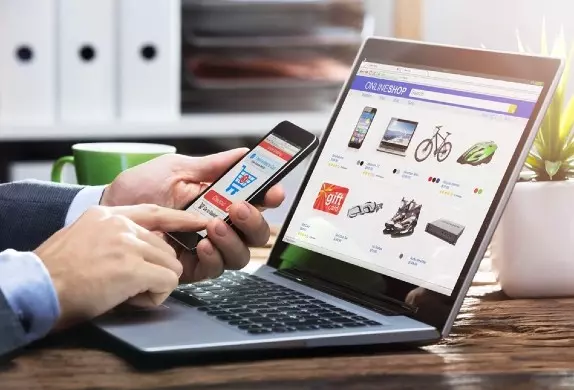SMS automation In today’s fast-paced digital landscape, businesses are constantly seeking innovative ways to enhance efficiency and improve communication. One such innovation that has gained significant traction is SMS automation. This powerful tool allows businesses to streamline their messaging processes, ensuring timely and effective communication with customers and stakeholders. In this comprehensive guide, we will explore the intricacies of SMS automation, its benefits, how it works, and why it is a game-changer for businesses of all sizes.

Understanding SMS Automation
SMS automation refers to the use of automated systems to send text messages to customers, employees, or other recipients based on predefined triggers or schedules. This technology leverages the simplicity and ubiquity of SMS (Short Message Service) to deliver messages quickly and efficiently. Unlike manual texting, which can be time-consuming and prone to errors, SMS automation ensures consistency and accuracy in communication.
Key Features of SMS Automation
- Automated Message Scheduling: With SMS automation, businesses can schedule messages to be sent at specific times or intervals. This is particularly useful for sending reminders, promotions, or follow-up messages without manual intervention.
- Trigger-Based Messaging: Messages can be triggered by specific actions or events, such as a customer making a purchase, signing up for a service, or reaching a milestone. This ensures that messages are relevant and timely.
- Personalization: Despite being automated, SMS automation allows for personalization. Messages can include the recipient’s name, specific details about their purchase, or other personalized information to enhance engagement.
- Bulk Messaging: Businesses can send messages to large groups of recipients simultaneously. This is ideal for marketing campaigns, announcements, or emergency alerts.
- Two-Way Communication: Some SMS automation systems support two-way communication, allowing recipients to respond to messages. This is useful for customer service, surveys, and feedback collection.
The Benefits of SMS Automation
Implementing SMS automation offers numerous advantages for businesses, ranging from improved efficiency to enhanced customer satisfaction.
1. Time Efficiency
One of the most significant benefits of SMS automation is the time it saves. Manually sending messages to hundreds or thousands of recipients can be a daunting task. Automation eliminates this burden, allowing employees to focus on more strategic activities. With pre-scheduled messages and trigger-based automation, businesses can ensure that messages are sent at the optimal time without manual intervention.
2. Consistency and Accuracy
Manual messaging is susceptible to errors, such as typos, incorrect recipient information, or missed messages. SMS automation ensures that messages are consistently formatted and delivered accurately. This consistency enhances the professional image of the business and minimizes the risk of miscommunication.
3. Enhanced Customer Engagement
Timely and relevant communication is key to maintaining customer engagement. SMS automation allows businesses to send personalized messages based on customer behavior and preferences. For instance, a retail store can send a personalized thank-you message after a purchase, or a service provider can send reminders for upcoming appointments. This personalized approach fosters stronger customer relationships and loyalty.
4. Cost-Effective Marketing
Compared to traditional marketing channels such as print or TV ads, SMS marketing is highly cost-effective. SMS automation allows businesses to reach a large audience with minimal expenditure. Additionally, the high open and response rates of SMS messages ensure that marketing efforts yield better results.
5. Improved Customer Service
Automated SMS can be used to enhance customer service by providing instant responses to common queries, sending order confirmations, or updating customers on the status of their inquiries. This level of responsiveness improves customer satisfaction and reduces the workload on customer service teams.
6. Data-Driven Insights
SMS automation platforms often come with analytics and reporting features. Businesses can track the performance of their SMS campaigns, monitor delivery rates, open rates, and response rates. These insights enable businesses to refine their messaging strategies and achieve better results over time.
How SMS Automation Works
To harness the power of SMS automation, businesses need to understand the underlying mechanisms and steps involved in setting up an automated SMS system.
Step 1: Choose an SMS Automation Platform
The first step is to select a reliable SMS automation platform that suits the needs of your business. There are numerous platforms available, each offering different features and pricing models. When choosing a platform, consider factors such as ease of use, integration capabilities, scalability, and customer support.
Step 2: Define Your Goals and Audience
Before setting up your SMS automation, it’s essential to define your goals and identify your target audience. Are you looking to increase sales, improve customer retention, or enhance customer service? Understanding your objectives will help you tailor your messages and triggers accordingly. Additionally, segment your audience based on demographics, behavior, or preferences to ensure that your messages are relevant and targeted.
Step 3: Create Message Templates
Crafting effective message templates is crucial for the success of your SMS automation campaigns. Messages should be concise, clear, and compelling. Include a strong call-to-action (CTA) and ensure that the content is aligned with your goals. Personalize messages by incorporating variables such as the recipient’s name, purchase details, or appointment information.
Step 4: Set Up Triggers and Workflows
Triggers are specific events or actions that initiate the sending of an automated SMS. Common triggers include:
- Purchase Confirmation: Send a confirmation message when a customer completes a purchase.
- Appointment Reminder: Send a reminder message a day before a scheduled appointment.
- Cart Abandonment: Send a follow-up message to customers who abandon their online shopping cart.
- Birthday Greetings: Send a personalized birthday message to customers on their special day.
Workflows define the sequence of actions and messages that occur after a trigger is activated. For instance, a workflow for cart abandonment might include an initial reminder, followed by a discount offer if the customer doesn’t complete the purchase within a certain period.
Step 5: Test and Optimize
Before launching your SMS automation campaign, conduct thorough testing to ensure that messages are delivered correctly and triggers function as intended. Test different message variations and workflows to determine what resonates best with your audience. Continuously monitor the performance of your campaigns and make adjustments based on the insights gained from analytics.
Step 6: Monitor and Analyze Performance
Once your SMS automation campaign is live, it’s essential to monitor its performance regularly. Use the analytics and reporting features of your automation platform to track key metrics such as delivery rates, open rates, click-through rates, and conversion rates. Analyze the data to identify trends, strengths, and areas for improvement. This data-driven approach will help you optimize your campaigns and achieve better results over time.
Practical Applications of SMS Automation
SMS automation can be applied across various industries and use cases, making it a versatile tool for businesses. Here are some practical applications:
1. E-Commerce and Retail
- Order Confirmations: Automatically send order confirmation messages to customers, including details such as order number, items purchased, and expected delivery date.
- Shipping Updates: Keep customers informed about the status of their shipments with automated shipping updates.
- Promotional Offers: Send personalized promotional offers and discounts based on customer purchase history and preferences.
2. Healthcare
- Appointment Reminders: Reduce no-shows by sending automated appointment reminders to patients.
- Prescription Refills: Notify patients when it’s time to refill their prescriptions.
- Health Tips: Provide patients with health and wellness tips based on their medical history.
3. Financial Services
- Transaction Alerts: Send instant alerts for account transactions, including deposits, withdrawals, and transfers.
- Payment Reminders: Remind customers about upcoming bill payments to avoid late fees.
- Security Alerts: Notify customers of suspicious account activity and provide steps to secure their accounts.
4. Education
- Class Reminders: Send reminders to students about upcoming classes, assignments, and exams.
- Event Notifications: Inform students and parents about school events, parent-teacher meetings, and extracurricular activities.
- Fee Reminders: Remind parents about upcoming tuition fee payments.
5. Hospitality
- Booking Confirmations: Automatically confirm hotel or restaurant reservations with details about the booking.
- Check-In Reminders: Send reminders to guests about their check-in time and procedures.
- Promotional Offers: Offer special discounts and promotions to frequent guests or loyalty program members.
SMS automation
SMS automation is a powerful tool that can significantly boost efficiency and improve communication for businesses across various industries. By leveraging automated messaging, businesses can save time, enhance customer engagement, and achieve better results from their marketing and customer service efforts. Whether you’re in e-commerce, healthcare, financial services, education, or hospitality, implementing SMS automation can streamline your processes and elevate your business to new heights.
By understanding how SMS automation works and following best practices for setting up and optimizing your campaigns, you can unlock the full potential of this technology and reap the numerous benefits it offers.





More Stories
The Ultimate Guide to Marketing Automation CRM
How CRM with Email Automation Transforms Your Business
Discover the Best Marketing CRM for Unmatched Growth